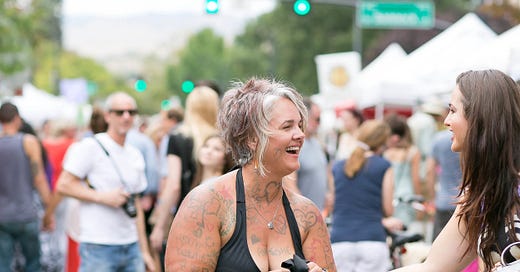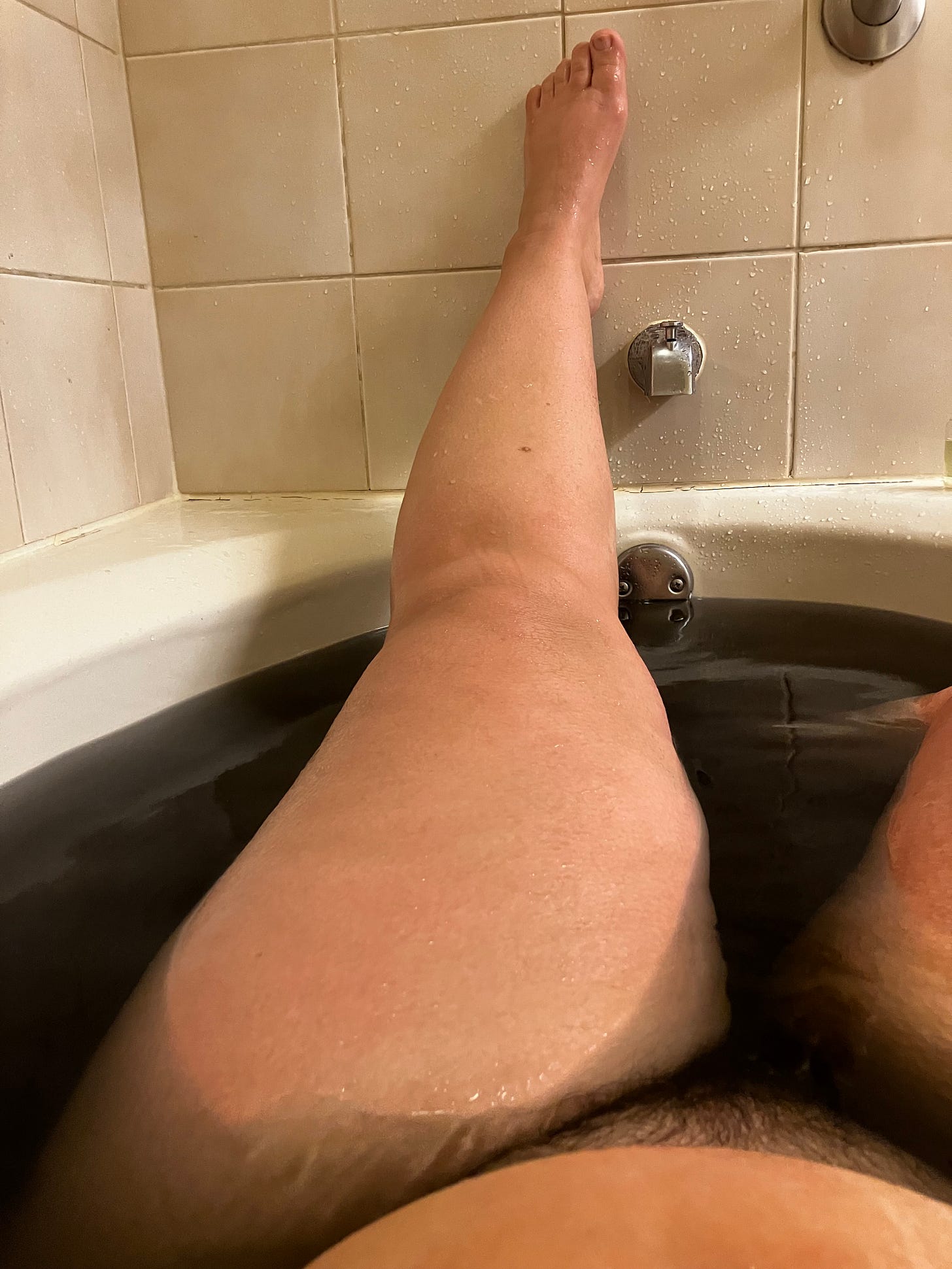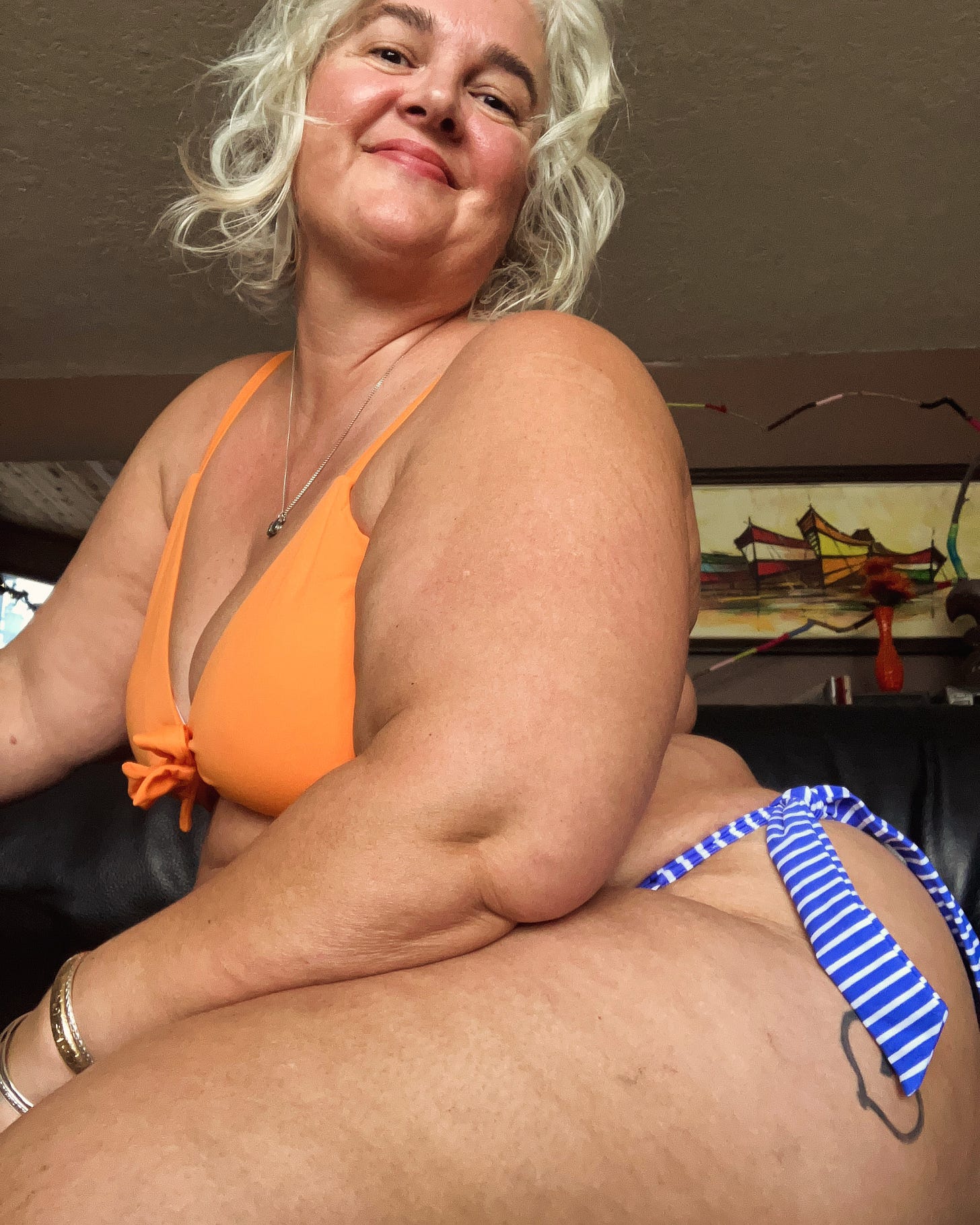This comment was just one of many I’ve gotten over the years from trolls on Instagram. In 2018 those trolls, mostly at the time white, teenage, racist, homophobic and misogynistic boys in Boise. (How do I know this? Well, often their username is so appalling it contains some bigotry but a quick glance of their page makes it so clear so fast it will turn your stomach.) Trolling is when someone deliberately tries to upset others online. Trolling can lead to a pile on, when others join in the attack. The other comments were more typical: you’re a liberal, you’re disgusting, you make me want to puke, and various emojis representing such. For at least five years I woke up to comments like these every single day. I’m often referred to in animalistic ways – fat pig, landwhale, old cow. Never before have I been referred to as a tree, though.
I’ve written often about the importance and beauty of trees in my work as a body image activist, as a mother, as a metaphor for life and death. I’ve written before about my connection to the earth and the planting of seeds I do both literally as the school garden coordinator at my neighborhood elementary school, and metaphorically, as a body image activist dropping tiny bits of radicalism in education here and there and watching them sprout, take root, reach for the sky, blossom. Though I’ve not been called a tree, I often think of myself as one. Especially when I’m doing a guided meditation or taking a yoga class. Barefooted, I ground myself into the earth and concentrate on feeling my roots pull into the planet’s core, my feet dirty and solid and strong.
I still think about this comment often, as my big thighs carried me up and down flights and flights of stairs or miles at the cemetery. I think about it when I trounce about pools and beaches in bikinis, my legs open to the sun. And when I’m modeling nude for a bunch of artists who render them voluptuous in pencils and paint, my heels cracked from walking barefoot in the backyard, my legs bruised from running into so many corners of tables, spider veins growing anew. My feet, like the rest of my legs, show signs of life – I have hips covered with the glittery stretchmarks of puberty and childbirth, thighs dimpled with cellulite, skin dry from the winter cold and still golden brown from the summer sun, a giant bush of black pubes – a few glinting silver.
When I was a teen my parents took our family on a road trip to the California coast, and it was the first time I ever saw the Redwoods. They were magnificent and larger than life – we drove our car through one and stopped in the middle in awe. The National Park Service website tells you a lot of information about these spectacular trees – about their rings of wisdom, about how it’s still a mystery why the Redwoods grow so tall, about how they’re virtually immune to their natural enemies. They tell about how superlatives abound when a person tries to describe old-growth redwoods: words like immense, ancient, stately, mysterious, powerful. Yet the trees were not designed for easy assimilation into language. Their exterior is rough and ragged a deep red texture. But their existence speaks for themselves, not in words, but rather in a soft-toned voice of patience and endurance.
I know he meant to insult me, but telling me I look like Redwood trees might be one of the best compliments I’ve ever received.








Love this. All women and trees are majestic.
(Note to self: Do NOT feed trolls!)